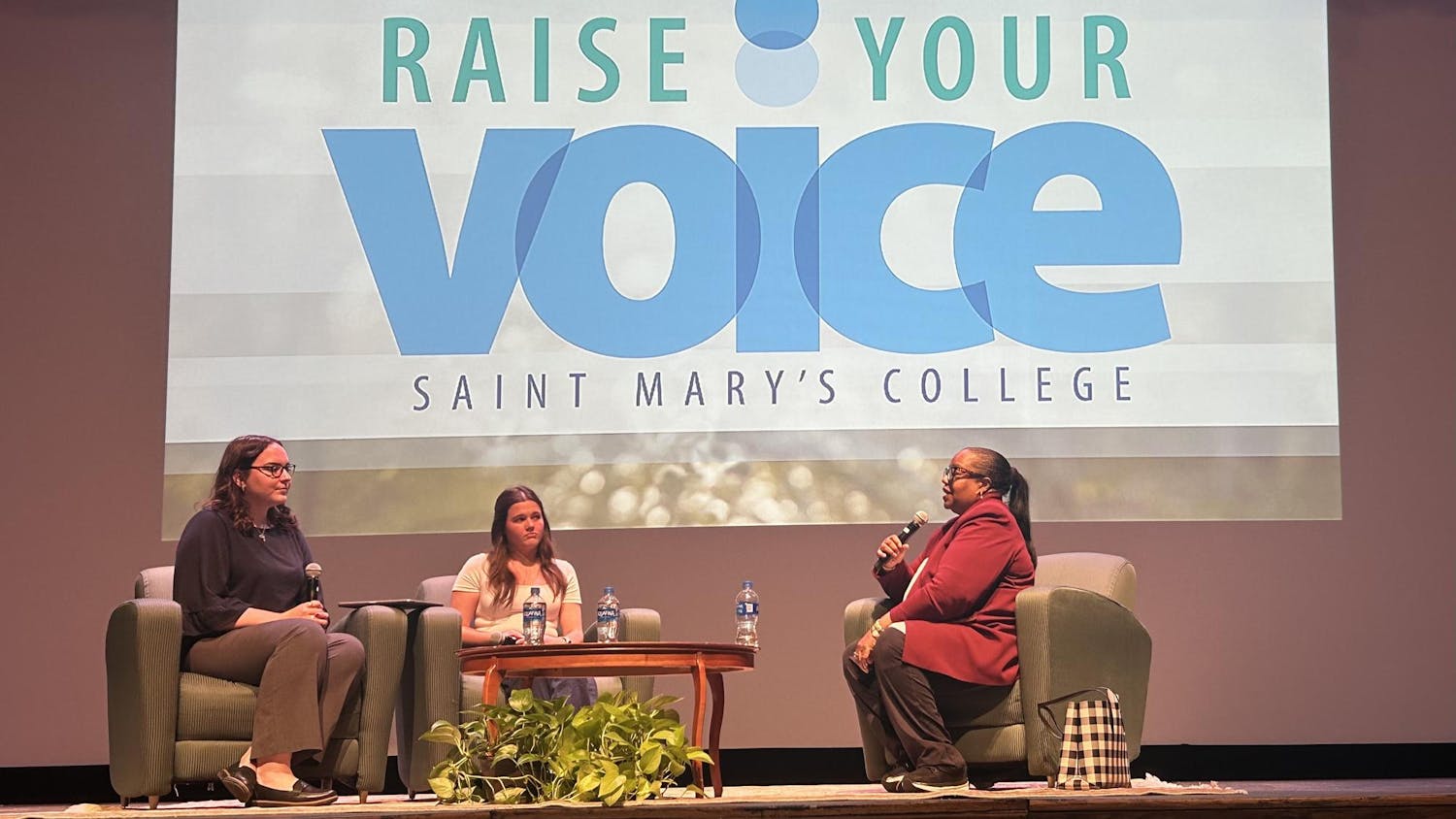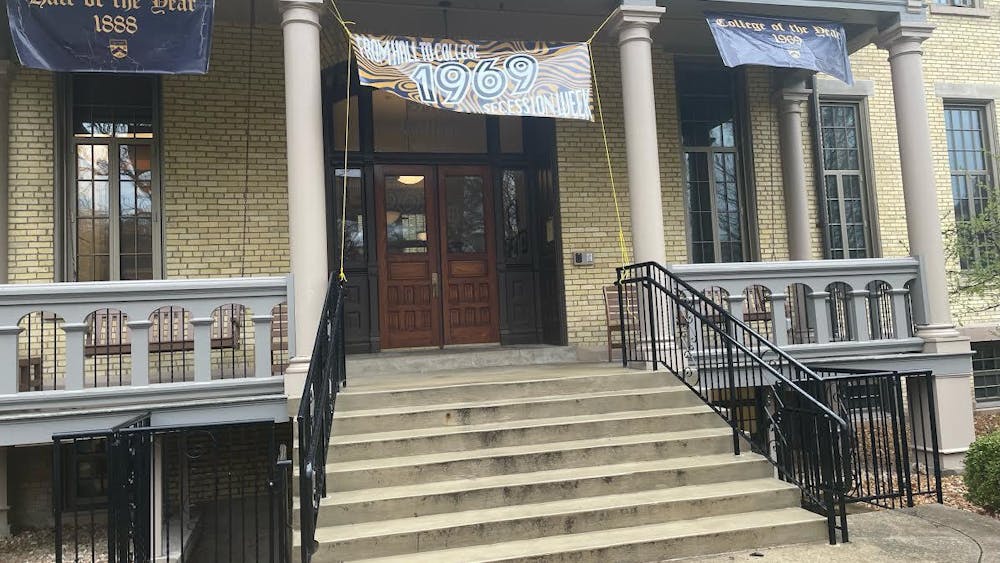The third annual Blue-Gold Mechatronic Football game featured an exciting, though somewhat one-sided game of good old eight-on-eight robot football. The competition was held in a leaky Stepan Center, but the stands were still packed with spectators who had braved the rainy weather.
The competition was founded three years ago by three alumni from the class of 1970: Bill Hederman, Vince Cushing and Skip Horvath. It was founded in memory of Hedermam's son, Brian, who died during his freshman year at Notre Dame in 1995.

The inspiration for the competition came from a drawing of a robotic football player found in Brian Henderman's room after his death.
Mechanical engineering professors Jim Schmiedeler and Michael Stanisic were in charge of the project, which is the capstone of a design course for seniors in the mechanical engineering department.
Seniors Eric Leis and Tom Banasiak, two of the designers behind the blue team's kicker, enjoyed the project and were pleased with their efforts.
"It was a good bonding experience working on a team with the other students," Banasiak said.
Their robot, The Death Star, went on to score 12 points in the game.
"It was the culmination of four years of hard work and sweat, and it's been a lot of fun putting it together," Leis said.

Three of the blue team's robots were operated by nine students from Ohio Northern University. According to Stanisic the ultimate goal is to build an intercollegiate competition.
All of the robotic players were controlled by wireless hand-held controllers operating on a local area network (LAN), Stanisic said. Students had to properly program each robot to respond properly to the controllers.
Each robot is equipped with a "knockdown sensor" to make tackling possible, according to Stanisic. The sensor normally displays a green light, but when struck the light will change to blue to indicate a tackle or a knockdown if the player is not carrying the ball. The light also signals "pain" by flashing red.
The sensor only malfunctioned on one tackle and the gold team was appropriately penalized.
For this year's game an emphasis was placed on passing. The teams were encouraged to develop the technology to pass by the modified scoring system, which awarded points simply for completing a pass.
Longer passes received more points than shorter passes. The blue team attempted several passes, including a few deep throws, but was unable to complete any of them. The gold team succeeded in completing one screen pass (3 points) and one short pass (7 points). However, blue defensemen also intercepted the gold team twice (3 points each).
In practices the players were able to complete passes of up to 40 feet, but during the game neither team could pass well consistently.
The gold team won the game by a score of 41 to 13 and was presented with the Brian Hederman Memorial Robotic Competition Award.
Upon receiving the award, gold team coach senior Bobby Powers spoke on behalf of his team and thanked everyone who attended for supporting the student engineers' work.
After the game, both coaches were pleased with their team's efforts.
"I am proud of my team," blue team coach senior Steve Bonomo said. "We did a lot of good maintenance work on the fly."
Powers said the gold team was happy to come away with the win.
"There were a lot of control problems during the game and I am proud of the way we reacted," he said.
Gold team robot Zippy received Most Valuable Robot honors for his performance on offense, defense and special teams. Zippy was responsible for 14 points on two offensive touchdowns and a safety, while also recovering an onside kick.












